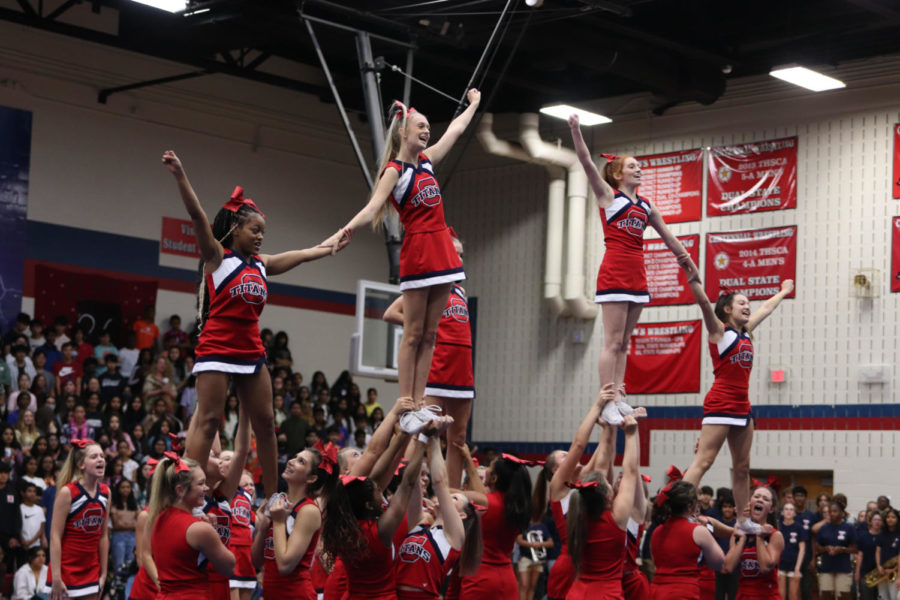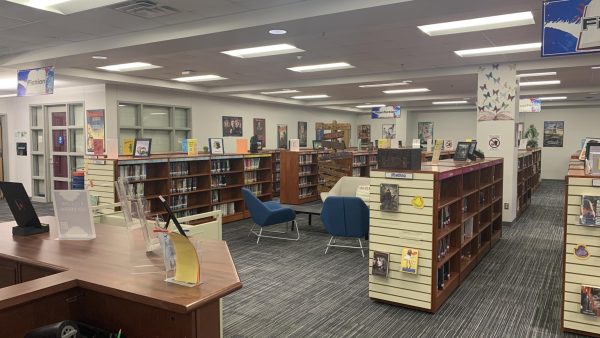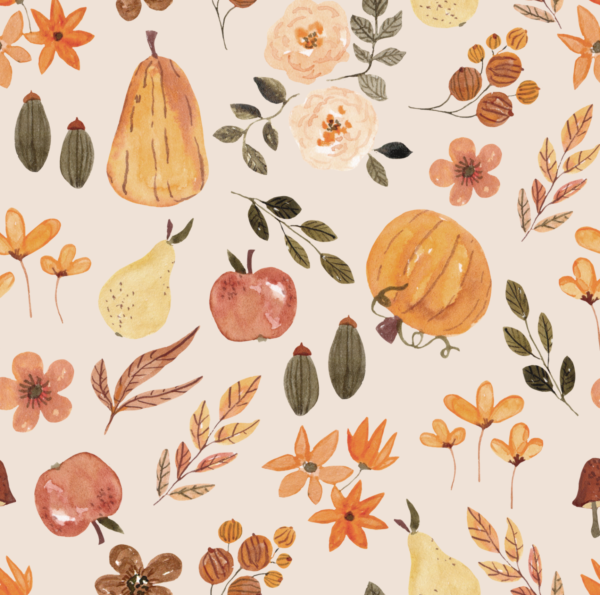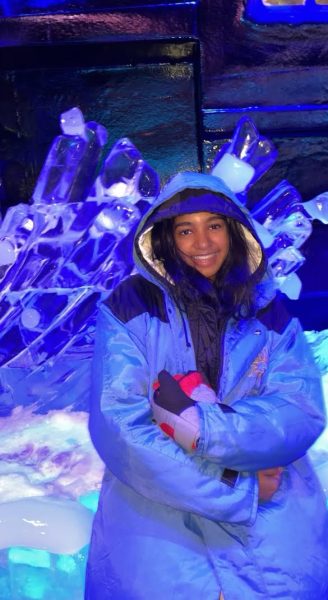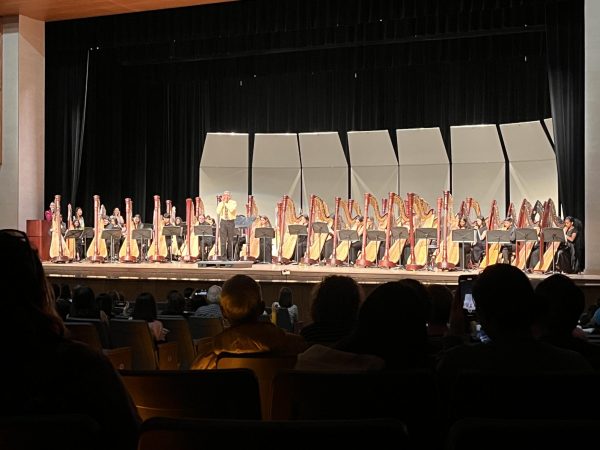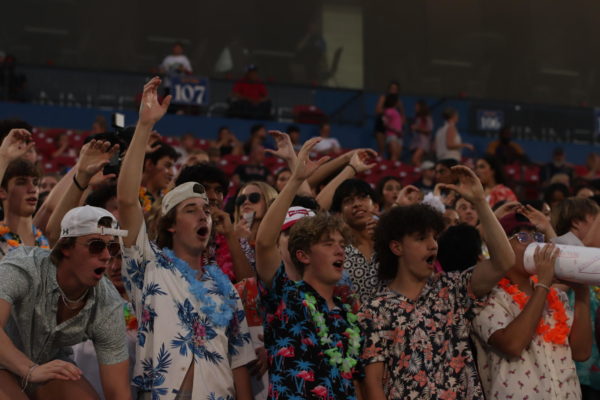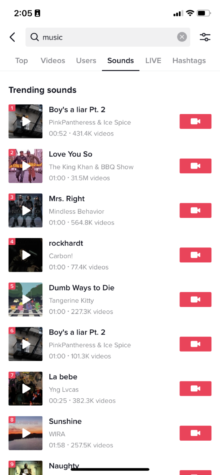Different Point of Views on High School Cliques
Cheerleaders performing a stunt at the Centennial High School pep rally
High school cliques, also known as stereotypes, are mostly presented in high school movies or TV shows. The mean girls, the popular kids, the nerd, the jocks, the theater kids, and several more, are examples of common cliques in Hollywood. Now is this true? The idea of stereotyping people based on their interests is not reality. If you’ve watched iconic high school movies like Mean Girls, Clueless, Sixteen Candles, and High School Musical, you may have noticed some basic stereotypes in these movies representing each group of kids based on their interests, how popular they are, and the way they act. A very well-known basic stereotype in these movies is the common clique of ‘popular kids’. They are commonly seen as the popular kids are commonly seen as attractive, exclusive, and well known . Cliques can be portrayed as a perfect group of kids with common interests on screen, but is that how it is in reality?
When students are a part of a clique they don’t really acknowledge the fact that they are. To find the answer, I decided to sit in a class to see if cliques are as obvious as they look in movies. The class I observed was very quiet but as soon as I entered the room, some of the students fit a clique that was very easy to spot. There was a table full of seniors who seemed exclusive. They seemed more comfortable in the class compared to the other students. There were some kids who were on task, some that were asleep, some watching Tik Tok, and some students were simply there for their credit. Hollywood movies seem to put these high school stereotypes out in the open for the viewers, but as students we don’t acknowledge that we do play a stereotypical role. In recent shows such as “Never Have I Ever”, the show portrays different groups of people and different cliques, but these characters get along and hang out with each other even though they have different interests and are involved in different things. Whereas in the movie “Mean Girls, everybody is separated and the popular girls sit together and the jocks sit together; there was a clear division between these cliques. But realistically, when choosing a table to sit at during lunch, is there a clear division in the cafeteria?
Now as a teacher, how do they see students in the classroom’? Do they see these cliques and stereotypes more clearly than we do? Mr. Singler, Centennial High School teacher, shared his thoughts over high school on his thoughts over high school cliques and if he saw them at Centennial.
He stated, “I’ve seen different groups but when I was in high school that was who you ran with and I don’t see it that much anymore; it seems as if the cliques sort of intermingle now.” “Cliques are relevant because they do speak to people; for example if I’m the nerd I’d like to know I’m represented. I feel fortunate because at Centennial we really do have good students, I know I don’t see it all but I don’t see all the mean stuff like in the movies like Mean Girls. I do believe that we have cliques and cliches but I don’t see it as dramatically as when I was in high school.”
I also asked him what he thought these stereotypes lead to and why he thinks they’re represented the way they are in Hollywood movies and he said, “I don’t think the life of a high school student is respected by a lot of adults… I don’t think a lot of adults realize how challenging a day to day life of a high school kid is.”
AP Lang teacher, Mrs. Webb, also had similar views on the topic. “Cliques on screen are exaggerated, there are definitely some things we can be concerned about, alot of it is the same theme and the same kinds of things happen but thankfully I don’t think most of the time it’s in such an exaggerated way. Sometimes I think kids want these stereotypes to be true, they make them aspirational whether they should be or not.”
“I think kids this age a lot of times are struggling to find their identity so sometimes they look to models like that because it looks cool or it looks like somebody they’d want to be and I don’t think that’s necessarily unhealthy but it can be.”
Interestingly enough, Ms. Sorenson, another teacher at Centennial, had slightly different views than the ones of her co-workers. She stated, “I’ve seen that a lot of the athletes tend to stick together and the band kids tend to stick together, I think there are those cliches that you see in movies but outside of that kids do whatever they want and don’t follow any specific pattern. My opinion on them is that it’s safe, I get that kids would stay where they want to and stay where it’s familiar, but I feel like it would be more beneficial for children to go outside of their cliques and groups.”
“In movies they tend to be exaggerated and a lot more narrow like the athletes aren’t academic but I don’t think that’s actually the case. Even though kids do stick to certain groups they’re not exaggerated in terms of personality or lack of effort. I believe stereotypes lead to an isolating feeling where kids feel like they have to fit in the box and it also narrows experiences. Cliques in movies and TV shows are just adults thinking that’s how kids act and so it’s interesting in that regard of adults thinking that’s how kids act.”
So the next time you watch Mean Girls and you get to the part where they show the cafeteria and where each clique sits, think of it as Centennial- except we don’t have the tables labeled. Personally as a student, you don’t realize that you’re in a clique. I believe that cliques do exist and there are some that are really obvious and others not so much, but at the end of the day, making sure everyone at least feels welcomed is what truly matters. Overall we’ve gathered that cliques exist but aren’t as crazy and exaggerated as the ones you see in movies and TV shows.

Hi, my name is Sana Hajidamji, I am currently a senior at Centennial High School. I am from Los Angeles, California and I moved to Texas in 2020. I have...


